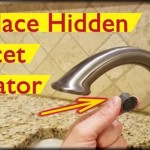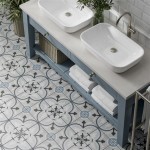Can You Use Plasterboard in a Bathroom?
Bathrooms are known for their high humidity levels, which can pose challenges for building materials. Plasterboard, a common wall covering, is often used in residential construction. However, its suitability in bathrooms requires careful consideration due to its susceptibility to moisture damage.
The potential problems associated with using standard plasterboard in a bathroom stem from its composition. Plasterboard, also known as drywall, is primarily composed of gypsum, a naturally occurring mineral that absorbs moisture. When exposed to prolonged periods of high humidity, gypsum can become saturated, leading to warping, cracking, and the growth of mold and mildew. These issues can compromise the structural integrity of the wall and create an unsanitary environment.
Despite these challenges, plasterboard can be used in bathrooms with proper planning and techniques to mitigate moisture risks. Here's a guide to understanding the factors to consider and the approaches to ensure its successful application.
Types of Plasterboard for Bathrooms
The key to using plasterboard in a bathroom is to select the appropriate type that is specifically designed for moisture-prone environments. Here are some options:
- Moisture-resistant plasterboard (MR): This type of plasterboard is treated with a green-colored paper facing that provides increased resistance to moisture penetration. MR plasterboard offers a better barrier against humidity than standard plasterboard but should still be used with caution in areas subject to direct water splashes.
- Water-resistant plasterboard (WR): WR plasterboard is more durable than MR plasterboard and features a blue-colored paper facing. It is designed to withstand direct water contact and is suitable for areas like shower stalls or backsplashes where water splashing is likely.
- Water-resistant gypsum board (WGB): WGB boasts a higher resistance to moisture and water than MR and WR plasterboards. It is commonly used in areas exposed to heavy water exposure, such as wet rooms.
Choosing the appropriate type of plasterboard for your bathroom depends on the specific area, its exposure to moisture, and the overall design requirements. It's essential to consult with a qualified building professional to determine the most suitable option for your unique needs.
Installation Techniques for Moisture-resistant Plasterboard
Even when using moisture-resistant plasterboard, proper installation techniques are crucial to prevent moisture damage. Here are some essential considerations:
- Ventilation: Adequate ventilation is vital in bathrooms to remove moisture from the air. Installing an exhaust fan that vents to the exterior of the building and utilizing other ventilation strategies, like open windows, is crucial to minimize humidity levels.
- Waterproofing: Apply a waterproof membrane directly to the studs behind the plasterboard. This membrane acts as a barrier against moisture that may penetrate the plasterboard. It is imperative to use a high-quality, specifically designed membrane for bathrooms.
- Sealant: Caulking and sealing all gaps and joints between the plasterboard panels, as well as around fixtures and plumbing, is essential. This prevents water from seeping into the wall and causing damage.
- Properly installed tiles: If tiling directly onto the moisture-resistant plasterboard, ensure a proper tile installation process. This includes using a suitable adhesive, ensuring proper grout application, and maintaining a slope towards the drain to facilitate water drainage.
Alternatives to Plasterboard
In situations where plasterboard is not feasible, other options for bathroom walls exist:
- Cement board: Cement board is a durable, water-resistant material often used in bathrooms due to its strength. While more expensive than plasterboard, it offers excellent protection against moisture and can be used for both walls and floors.
- Waterproof PVC panels: PVC panels are readily available, lightweight, and highly resistant to moisture. They are often used in shower enclosures and backsplashes due to their ease of installation and maintenance.
- Ceramic tiles: Ceramic tiles are a classic choice for bathroom walls because they are durable and resistant to moisture. They offer a wide variety of styles and colors to suit different aesthetic preferences.
These alternatives provide various options for creating a functional and aesthetically pleasing bathroom while addressing the unique challenges of high moisture levels.

How To Install Moisture Resistant Plasterboard In The Bathroom

What Plasterboard Can I Use In A Bathroom Plaster S

Top 5 Bathroom Installation Costs Guru

The Ultimate Guide To Plasterboard

3 Golden Reasons Why Is Worth To Use Moisture Resistant Plasterboard Infographic

What Type Of Bathroom Drywall Should I Use

Managing Transition From Cement Board To Plasterboard In Bathroom Tiling Forum Advice Tilers

Can You Use Normal Plasterboards In A Bathroom The Diy Fix
Tanking A Shower Bathroom Guru

Moisture Resistant Plasterboard T E 1200x2400x12 5mm Wel Bm
Related Posts







